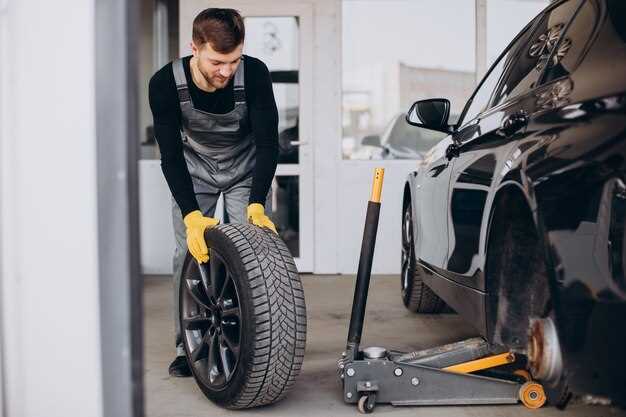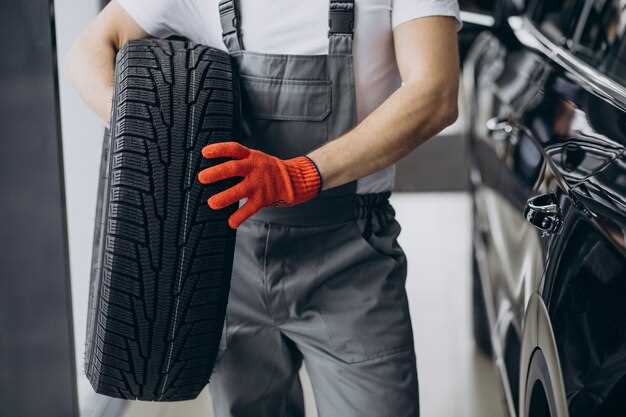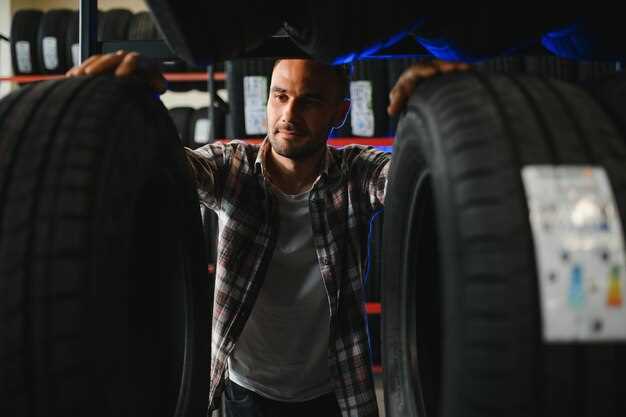
Maintaining high-performance tires is essential for ensuring optimal traction and safety on the road. Over time, tires undergo wear and tear that can significantly impact their performance. Recognizing the signs that indicate it’s time for a change can save you from potential hazards and enhance your driving experience.
One of the primary indicators of tire wear is the depth of the tread. As tires lose tread depth, their ability to grip the road diminishes, particularly in wet conditions. Monitoring tread wear not only contributes to improved handling but also ensures greater stability and control, essential for any high-performance vehicle.
Additionally, looking out for uneven wear patterns can provide insight into your tires’ health. Such patterns may suggest alignment or inflation issues that require attention. Ignoring these signs can lead to decreased traction and increased risks while driving. Recognizing and addressing these symptoms promptly is crucial for maintaining your vehicle’s performance and safety.
Evaluating Traction in Various Weather Conditions
Traction is a critical performance aspect of high-performance tires, especially when faced with varying weather conditions. Understanding how tires interact with different surfaces can significantly affect safety and driving experience.
In wet conditions, effective tire traction relies on tread design and rubber composition. Tires with deeper grooves and specialized hydrophobic channels are engineered to disperse water, reducing hydroplaning risks. Therefore, it is essential to regularly inspect the tread depth to ensure sufficient grip on wet roads.
In snowy and icy conditions, tire traction becomes even more crucial. Performance tires often struggle in such environments due to their softer rubber compounds and shallower tread patterns. Winter-specific tires, equipped with modified designs and materials, provide superior grip. If you notice a decrease in traction during winter months, consider switching to dedicated winter tires for enhanced performance.
On dry surfaces, high-performance tires excel in providing exceptional traction due to their optimized contact patches. However, as tires wear, their ability to maintain this grip diminishes. Monitoring tire wear and adjusting accordingly can help preserve traction during spirited driving or racing conditions.
Finally, testing tire traction under various conditions can reveal performance capabilities. Conducting controlled tests in different weather scenarios allows drivers to understand when tire replacement might be necessary, ensuring optimal performance and safety on the road.
Identifying Uneven Tire Wear Patterns
Uneven tire wear is a critical issue that can significantly affect your vehicle’s performance and safety. Recognizing these patterns early can prevent further complications and enhance your tires’ traction on the road.
One of the most common signs of uneven wear is wearing on one side of the tire more than the other. This may indicate misalignment, which can lead to poor handling and reduced traction. If the inner or outer edges of the tires are more worn, it’s essential to have the alignment checked by a professional.
Another sign to look for is cups or scallops in the tread. These irregularities can develop from suspension issues or improper inflation. When tire pressure fluctuates, it can lead to inconsistent contact with the road surface, ultimately diminishing traction and increasing the risk of hydroplaning during wet conditions.
If you notice feathering, where the tread wears unevenly across the width, this may suggest that your tires are experiencing excessive toe angles. This condition can compromise stability and grip, making it crucial to address the alignment promptly.
Lastly, check for patchy wear patterns that resemble bald spots interspersed with areas of adequate tread. This can indicate that the tire is losing traction in certain areas, which can lead to a dangerous driving experience, especially in adverse weather conditions.
In conclusion, identifying these uneven wear patterns early on will not only extend the life of your high-performance tires but also improve your vehicle’s overall traction and handling. Regular inspections and proper maintenance are key to ensuring optimal tire performance.
Recognizing Declining Steering Response
A high-performance tire is crucial for ensuring optimal handling and steering response in your vehicle. However, as tires wear over time, you may notice a decline in how responsive your steering feels. Recognizing these signs early can prevent more serious issues and improve your overall driving experience.
Here are key indicators that your steering response may be declining due to tire wear:
- Vibration: If you experience excessive vibrations through the steering wheel while driving, it may indicate uneven tire wear or damage. Such vibrations can compromise your steering accuracy.
- Pulling to One Side: A vehicle that pulls to one side when driving straight could signal that one tire is more worn than the others. Uneven wear affects steering balance and alignment.
- Delayed Response: If you notice a lag in the steering response when turning, this could be due to worn tires. The tires may no longer provide the grip needed for precise maneuvers.
- Increased Steering Effort: You might find yourself needing to exert more effort to steer your vehicle. This could indicate that your tires are excessively worn, affecting their performance.
- Tire Tread Depth: Regularly check the tread depth of your tires. If the tread appears worn down to 2/32 of an inch or less, it’s time to replace them. Insufficient tread depth can severely impact steering response.
Monitoring these signs and being proactive about your tire maintenance can help maintain the high-performance characteristics of your vehicle. If you recognize any of these symptoms, consider consulting a tire professional to evaluate your tires for wear and recommend replacements if necessary.
Assessing Tire Noise Levels During Driving
One of the key indicators that may signal it’s time to change your high-performance tires is the noise level experienced during driving. As tires wear, various factors contribute to increased sound, which can significantly affect driving comfort and overall experience. It’s essential to pay attention to these auditory cues while on the road.
When tires lose their tread and begin to wear unevenly, the traction they provide diminishes. This reduction in traction can create a distinct humming or whining noise, particularly noticeable at higher speeds. If you find the noise has become louder than usual, it might indicate that your tires are no longer performing optimally.
Additionally, unusual sounds such as thumping or clattering can suggest potential tire damage or imbalance. These noises often arise from improper wear patterns or foreign objects embedded within the tread. Regularly assessing the noise levels while driving can help you identify when such issues arise, prompting timely tire replacement to ensure safety and performance.
In conclusion, keeping an ear on tire noise can provide valuable insights into their condition. Prioritizing this aspect of tire maintenance can prevent further deterioration of traction and enhance driving safety, ensuring a smooth and enjoyable experience behind the wheel.
Understanding the Importance of Tread Depth

Tread depth is a critical factor in ensuring the performance and safety of your high-performance tires. It directly affects tire grip, handling, and overall vehicle control. As tires wear down, the tread depth diminishes, leading to reduced traction, especially in wet or slippery conditions. Maintaining adequate tread depth is essential for optimal performance and safety on the road.
Different types of tires have specific minimum tread depth recommendations. For high-performance tires, the ideal tread depth often ranges from 5/32 to 10/32 of an inch, depending on the tire’s design and intended use. As the tread wears down to these minimums, the ability of the tire to channel water away from the contact patch decreases significantly, increasing the risk of hydroplaning.
| Tread Depth (inches) | Performance Impact |
|---|---|
| 10/32 | Optimal grip and control |
| 7/32 | Good performance; caution advised in rain |
| 4/32 | Significantly reduced traction; time to replace |
| 2/32 | Unsafe; tire replacement necessary |
Regularly checking tread depth can help you avoid potential hazards on the road. Utilizing a tread depth gauge or the penny test can provide a simple means of measuring wear. If the tread is too low, it’s crucial to replace the tires to ensure safety and maintain high-performance capabilities.
Monitoring Vibration and Handling Issues

Regularly monitoring your vehicle’s performance is essential for ensuring safety and maximizing the lifespan of high-performance tires. Vibration and handling issues can indicate that it’s time for a replacement. Here are key aspects to consider:
- Vibration Detection: If you notice unusual vibrations while driving, particularly at higher speeds, this may signal a problem with your tires. Review the following steps:
- Check for uneven wear patterns on the tire surface.
- Inspect for damage, such as cuts or bulges.
- Ensure proper tire inflation to avoid imbalances.
- Handling Issues: Difficulty in steering or maintaining control is a serious concern that should not be ignored. Look out for these signs:
- Increased steering sensitivity or a feeling of looseness.
- Pulling to one side, which could indicate uneven wear or misalignment.
- Loss of traction, especially in wet or slippery conditions, suggesting tire degradation.
- Tire Wear Observation: The overall condition of your tires plays a crucial role in performance. Monitor the following:
- Examine the tread depth; tires should not be worn down beyond the recommended limits.
- Look for signs of irregular wear, which can affect traction and stability.
- Regularly rotate your tires to promote even wear.
By attentively monitoring vibrations and handling issues, you can ensure your high-performance tires are functioning optimally and replace them when necessary to maintain safety and performance standards.
